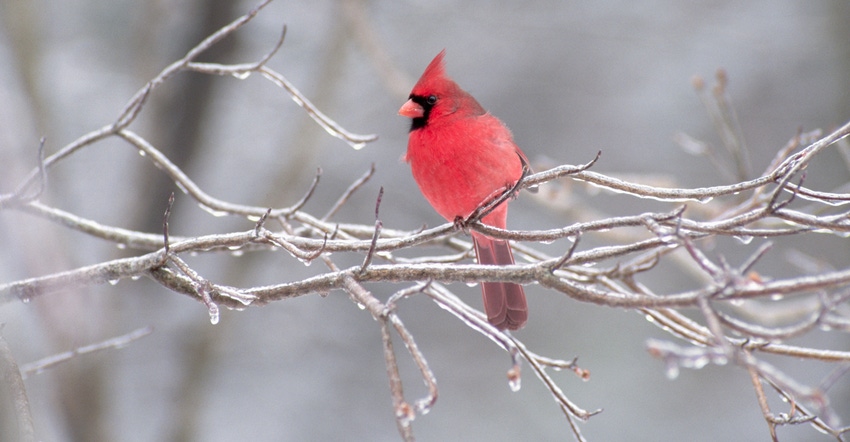
A decade ago, our family raised black oil sunflowers for wild birdseed. We grew the sunflower seed, processed and bagged it, and we sold it to birding enthusiasts.
During that time, we gained knowledge from our customers about feeding birds in the winter. Winter bird feeding is a big industry, and it also is a passionate hobby for bird lovers around the country, including many farmers and ranchers, like our family.
In addition to providing a feeding station, planting the right trees and shrubs to provide winter food and shelter for birds is crucial. This is especially true if you enjoy offering habitat for birds and like seeing a diverse and large population of birds around your home and farm.
Along with personal experience, we’ve gleaned tree planting suggestions from several birding and forestry sources.
Shelter and food
Among the evergreens, trees such as pines, junipers, firs and spruce provide a bird-friendly landscape for winter shelter. Birds enjoy the seeds from the cones, which offer a valuable source of winter food for chickadees, pine siskins, grosbeaks and woodpeckers.
Evergreens offer high-quality shelter from winter storms and snow, providing a warmer place for birds to nestle in away from the worst of the wind and moisture.
Deciduous trees do not offer as much shelter as evergreens, but oaks, hickories and walnuts are among those that produce nuts as a source of food. Trees with fruit and berries offer another staple food source.
Crabapple trees, hawthorn, winterberry, bayberry, sumac and viburnum provide fruit or small berries that hang on the trees and branches through the winter months as nutrition for birds.
If you are planting for the birds, it is always best to plant native trees and shrubs. These are not only best suited for the soils and climate conditions within your region, but they also are best suited as sources of food and shelter for the wildlife — including birds — that inhabit the area.
Along with a clean, well-supplied bird feeding station, these trees and shrubs — and many others like them — offer what birds need for the winter months. In addition to trees, fresh water is the often overlooked feature that is always necessary if you are serious about feeding and viewing.
If you can keep an open water source near these trees and shrubs and your feeding station, the birds are sure to frequent your farmstead all winter.
Our favorite winter birds are nuthatches and chickadees, along with noisy blue jays. We love hearing and viewing Northern cardinals, which really stand out against a backdrop of fresh, white snow. Goldfinches also provide a colorful view when they are up to the winter feeders.
In any case, it is best to plan during the winter months for the birds you want to attract. As spring rolls around, consider planting native trees and shrubs that attract, shelter and nourish winter birds to enhance the pure numbers and diversity of species you have frequenting your farmstead or your feeding stations.
About the Author(s)
You May Also Like






